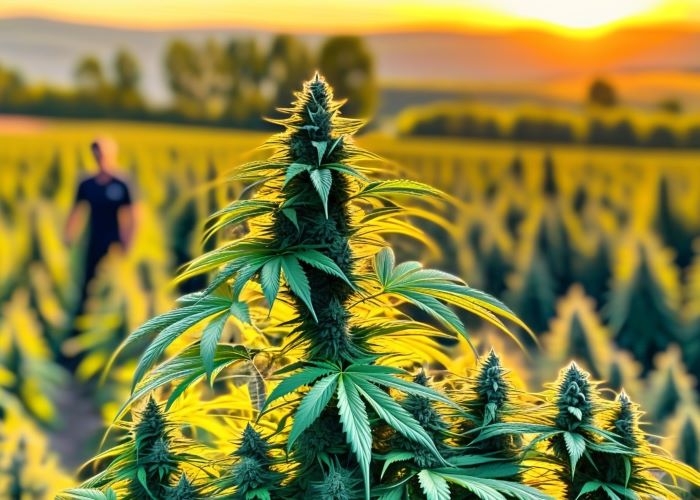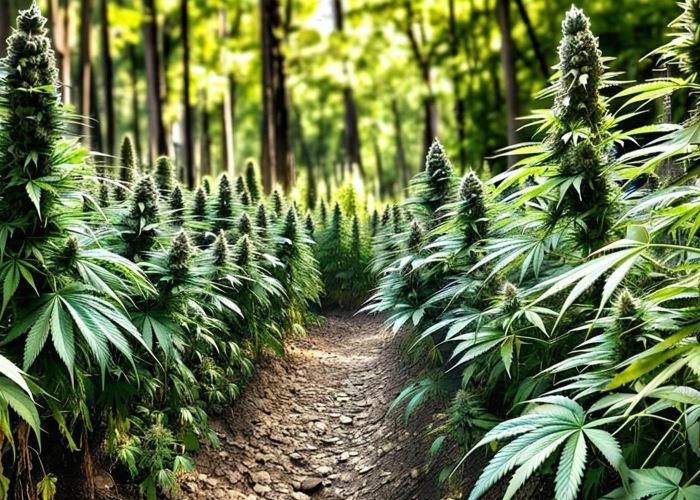The Influence of Climate on the Choice of Cannabis Strain
Growing cannabis is a rewarding journey into the world of nature, where every aspect counts. Imagine yourself a gardener, aimed at creating not just a plant, but a piece of art that reflects the harmony of earth, sun, and air. In this world, both climate and geographical location are equal allies and enemies. The only way to achieve true excellence is to learn, understand, and feel them.

You may think that cannabis grows the same everywhere. But that is a misconception. As a matter of fact, each plant is truly unique and has its own response to the surrounding environment. Much like how different grape varieties tend to yield distinctive wines due to their terroir, cannabis reveals its characteristics depending on where and how it is grown. From the mountainsides of Colombia to the sunbaked fields of Spain, from the rainforests of Southeast Asia to the frozen landscapes of Canada, each place on Earth offers a unique set of conditions that affect plants differently.
But what if you're new to the game? Where is the right place to start? How to sift through the nuances and find the perfect strain for your latitude? For all intents and purposes, understanding how climate and location affect the growth and development of cannabis is key to success.
Geography is Your Best Friend
When it comes to growing cannabis outdoors, the first thing to consider is geographic location. Depending on where you sow the seeds, the plants will develop differently. So what makes a particular region the perfect place to grow cannabis?
First, let's take a look at latitude. The closer you are to the equator, the more sunlight your plants will receive. What does that mean for your cannabis? Plain and simple. More light means more energy for growth and therefore higher yields. For example, in places like Colombia or Thailand, local sativa strains grow like crazy, reaching several meters. However, for those who aren't ready to deal with plants the size of a three-story house, it may be worth looking into hybrids or even low-profile cannabis strains.
But it's not as easy as it sounds. As the saying goes, there are two sides to the coin. The closer you are to the poles, the shorter the daylight hours, and that is a challenge. In this scenario, indica and autoflowering feminized strains are the best options, as they are well adapted to the short daylight hours and can easily complete their life cycle before the onset of winter. Here's the answer to why cannabis is so popular in Canada!
Climate: Is it Warm, Bright, and Snug as a Bug in a Rug?
Climate conditions are the next critical factor in making or breaking your crop. Temperature, humidity, precipitation, and wind intensity can significantly affect the final result.
Temperature is the staff and staple. The perfect temperature range for cannabis lies between 21 and 25°C. However, if you live in a region where summers are consistently hot, you'll want to consider strains that can withstand extreme temperatures. In this case, you may find that our newly bred feminized strains, designed specifically for such conditions, are right for you.
Humidity is another crucial aspect. Humid conditions caused by heavy autumn rains can affect cannabis plants with mold and fungus. This is when autoflowering feminized strains or Fast Version varieties come into play. They manage to complete their life cycle before the excess moisture kicks in and causes trouble.
2

How to Make Any Climate Your Ally
No matter what climate zone you live in, there are countless ways to adapt to your plant's needs and turn even the most adverse conditions into your allies.
Choosing the Right Place for Planting
Different microclimates can occur even within the same region. For instance, a plot sheltered from the wind and open to abundant sunlight will be much more suitable for growing than an exposed, windswept area or the north side of a hill.
Use of Auxiliary Equipment
Automated irrigation systems and timely construction of shelters from the scorching sun or lingering rains make the growing process much more comfortable and ensure excellent results even in the most challenging conditions.
Creating a Controlled Climate
Consider a controlled indoor environment if conditions in your area are not conducive to growing cannabis outdoors. Greenhouses are the best option for temperature, humidity, and light control to create favorable conditions for plant growth. Indoor growing offers ultimate freedom in strain selection and eliminates a host of weather-related issues.
In Conclusion
The climate and geographical location of your area are key when choosing a strain to grow outdoors. Understanding these factors can make you a true craftsman, capable of producing harvests that not only please, but surprise. Regardless of where you live, choosing the right strain and considering the climate conditions will help you get the best results.
So don't hesitate to experiment, explore new varieties, techniques, and approaches, and your crops are sure to become a source of your pride and friendly envy among other growers!
![[``]](/wa-data/public/site/themes/kadama/img/kadama_logo.svg)




